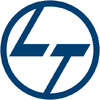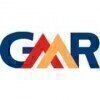Filter interviews by
Mehta Jaising Developers Land Surveyor Interview Questions and Answers
Mehta Jaising Developers Land Surveyor Interview Experiences
1 interview found
I applied via Newspaper Ad and was interviewed before Oct 2022. There were 2 interview rounds.

(5 Questions)
- Q1. How to work on your field.
- Q2. All questions about your designation
- Q3. Witch field is your experience
- Q4. Witch mashine used on your working time
- Ans.
Total stations and GPS receivers are commonly used machines in land surveying.
Total stations are used for measuring angles and distances between points on the ground.
GPS receivers are used for obtaining precise positioning data using satellite signals.
Other equipment such as levels, theodolites, and drones may also be used depending on the project requirements.
- Q5. How to convince to client
- Ans.
By demonstrating expertise, providing clear communication, offering competitive pricing, and showcasing past successful projects.
Showcase expertise through qualifications and experience
Communicate clearly about the project scope, timeline, and deliverables
Offer competitive pricing compared to other surveyors
Present past successful projects as proof of capability
Interview Preparation Tips
Top trending discussions






Interview questions from similar companies

Interview Questionnaire
7 Questions
- Q1. Convert quadrant bearing to whole circle bearing.
- Ans.
To convert quadrant bearing to whole circle bearing, add 90 degrees to the quadrant bearing.
Quadrant bearings range from 0 to 90 degrees.
Whole circle bearings range from 0 to 360 degrees.
To convert, add 90 degrees to the quadrant bearing.
For example, a quadrant bearing of N45°E would become 135°.
- Q2. What is contour.
- Ans.
Contours are lines on a map that connect points of equal elevation, representing the shape and relief of the land.
Contours are used in land surveying to depict the topography of an area.
They connect points of equal elevation, allowing surveyors to visualize the shape and relief of the land.
Contours are typically represented as curved lines on a map, with each line representing a specific elevation.
The spacing between c...
- Q3. How to find out angle and distance a polygon.
- Ans.
To find out the angle and distance of a polygon, you can use trigonometry and surveying techniques.
Measure the lengths of each side of the polygon using a tape measure or surveying equipment.
Use a theodolite or total station to measure the angles between each side of the polygon.
Apply trigonometric formulas to calculate the angles and distances based on the measured values.
For example, you can use the Law of Cosines to...
- Q4. What is UTM
- Ans.
UTM stands for Universal Transverse Mercator. It is a coordinate system used to locate positions on the Earth's surface.
UTM is a grid-based system that divides the Earth into 60 zones, each 6 degrees of longitude wide.
It uses a metric coordinate system, with eastings and northings measured in meters.
UTM coordinates consist of a zone number, hemisphere (N or S), easting, and northing.
For example, a UTM coordinate might ...
- Q5. What is WGS
- Ans.
WGS stands for World Geodetic System, a standard reference system used for mapping and surveying the Earth.
WGS is a global coordinate system used to accurately represent the Earth's surface.
It provides a consistent framework for measuring and locating points on the Earth's surface.
WGS is commonly used in GPS navigation, cartography, and land surveying.
It uses latitude and longitude coordinates to define positions on th...
- Q6. How to work GPS
- Ans.
Working with GPS involves understanding its functions, using the correct equipment, and interpreting the data accurately.
Learn the basic functions of GPS devices and how to operate them.
Ensure that the GPS device is properly calibrated and has a clear view of the sky for accurate readings.
Use the appropriate GPS equipment for the specific surveying task, such as a handheld GPS unit or a survey-grade GPS receiver.
Unders...
- Q7. How many satellites want there gps receiver.
- Ans.
The number of satellites a GPS receiver wants depends on its accuracy requirements and the availability of satellite signals.
The minimum number of satellites required for a GPS receiver to function is 4.
Most GPS receivers aim to acquire signals from at least 8 to 12 satellites for better accuracy.
The more satellites a GPS receiver can track, the more accurate its positioning and timing information becomes.
GPS receivers...

Interview Questionnaire
2 Questions
- Q1. Related to survey
- Q2. Civil survey infrastructure

Interview Questionnaire
12 Questions
- Q1. Tunnel express. Jetty..
- Q2. Good survey engineer
- Q3. Good engineer
- Q4. Good team megment
- Q5. Good confidence
- Q6. Good beabehar
- Q7. Ts opereter
- Q8. Good company
- Q9. Raining job
- Q10. Good exprencess
- Q11. By jb g dg j hu j
- Q12. Gd

Land Surveyor Interview Questions & Answers
Shapoorji Pallonji Groupposted on 31 Mar 2023
I applied via Naukri.com and was interviewed before Mar 2022. There were 3 interview rounds.

About surveying , traverse error closing, building set back checking process.
(2 Questions)
- Q1. Why you want change current position & originations
- Ans.
I am seeking a change in my current position and organization to further develop my skills and pursue new opportunities.
Seeking new challenges and growth opportunities
Desire to work in a different environment or industry
Wish to expand knowledge and skills in land surveying
Looking for better career prospects and advancement
Seeking a more fulfilling and rewarding role
- Q2. Salary bargaining & notice period
- Ans. Salary bargaining too much . notice one month
Interview Preparation Tips

(2 Questions)
- Q1. How much experience you have
- Ans.
I have 8 years of experience working as a Land Surveyor.
8 years of experience in land surveying
Proficient in using surveying equipment and software
Experience in conducting boundary surveys, topographic surveys, and construction staking
Familiar with relevant laws and regulations in land surveying
- Q2. What is your role
- Ans.
As a Land Surveyor, my role is to accurately measure and map the land, including boundaries, topography, and features for construction or development projects.
Accurately measure and map land boundaries
Analyze topography and features of the land
Provide data for construction or development projects

Land Surveyor Interview Questions & Answers
Shapoorji Pallonji Groupposted on 11 Oct 2020
Interview Questionnaire
1 Question
- Q1. How to calculate degree between two lines
- Ans.
The degree between two lines can be calculated using trigonometry and the coordinates of the lines.
Find the slope of each line using the formula (y2 - y1) / (x2 - x1)
Calculate the angle between the slopes using the formula tan^-1((m2 - m1) / (1 + m1 * m2))
Convert the angle from radians to degrees

I applied via Naukri.com and was interviewed in Feb 2024. There were 2 interview rounds.
(3 Questions)
- Q1. I have done a survey work and am still doing it. I have worked in an underground metro project.
- Q2. Diploma in land surveyor
- Q3. I was working as a surveyor in Hindustan Construction Company. I have done survey work in this company for more than four years.
(2 Questions)
- Q1. 10+2 diploma in land surveyor
- Q2. Diploma in land surveyor

I applied via Campus Placement and was interviewed before Sep 2020. There was 1 interview round.
Interview Questionnaire
3 Questions
- Q1. l&t company establishment date
- Q2. You have a experience in construction line.
- Q3. What working to be site
- Ans. Box culvert, returning wall, desk slab, cross bariyar, tow wall etc.
Interview Preparation Tips
I work to rail project, road project, hospital and metro project working in site.

Site Supervisor Interview Questions & Answers
Megha Engineering & Infrastructuresposted on 2 Sep 2021
I applied via Recruitment Consultant and was interviewed before Sep 2020. There was 1 interview round.
Interview Questionnaire
3 Questions
- Q1. Earakshan stinking ke bare mein poochha Gaya
- Q2. Ericsson ki TMP stinging ki TMP
- Q3. Civil work and field planning
Interview Preparation Tips
Mehta Jaising Developers Interview FAQs
Tell us how to improve this page.
Mehta Jaising Developers Interviews By Designations
- Mehta Jaising Developers Safety Officer Interview Questions
- Mehta Jaising Developers Junior Engineer Civil Interview Questions
- Mehta Jaising Developers Project Engineer Interview Questions
- Mehta Jaising Developers Quality Engineer Interview Questions
- Mehta Jaising Developers Land Surveyor Interview Questions
Interview Questions for Popular Designations
- Surveyor Interview Questions
- Quantity Surveyor Interview Questions
- Senior Land Surveyor Interview Questions
- Senior Surveyor Interview Questions
- Senior Quantity Surveyor Interview Questions
- Civil Surveyor Interview Questions
- Assistant Quantity Surveyor Interview Questions
- Civil Quantity Surveyor Interview Questions
- Show more
Mehta Jaising Developers Land Surveyor Interview Process
based on 1 interview
Interview experience
Land Surveyor Interview Questions from Similar Companies
Mehta Jaising Developers Land Surveyor Reviews and Ratings
based on 1 review
Rating in categories
|
Site Engineer
19
salaries
| ₹1.9 L/yr - ₹6.5 L/yr |
|
Safety Officer
8
salaries
| ₹3.1 L/yr - ₹4.8 L/yr |
|
Civil Site Engineer
6
salaries
| ₹2.9 L/yr - ₹3.6 L/yr |
|
Billing Engineer
6
salaries
| ₹5 L/yr - ₹8 L/yr |
|
Senior Site Engineer
6
salaries
| ₹5.1 L/yr - ₹9 L/yr |

Larsen & Toubro Limited

L&T Construction

Tata Projects

Megha Engineering & Infrastructures
- Home >
- Interviews >
- Mehta Jaising Developers Interview Questions >
- Mehta Jaising Developers Land Surveyor Interview Questions








